BankofMarquis (1832 KP) rated 2001: A Space Odyssey (1968) in Movies
Mar 4, 2018
MASTERPIECE
I have a long history with this film. My father took me to it as a 7 year old. I was intrigued by the Sci-Fi special effects, but mostly liked the monkeys at the beginning. I then saw it again as a college student in the early 1980's and was "really into" (for obvious reasons) the psychedelic special effects at the end. Later...in the early 1990's, during my Arthur C. Clark phase, I read the book and then re-watched the film and my understanding of what was happening on the screen gelled and, consequently, my fascination and respect for the themes and scope of 2001 opened up new doors of understanding. I think I have seen it another 4 or 5 times since then and have appreciated it in different ways each time.
For this viewing, I walked away with a sense of awe of the sheer craftsmanship and audacity that Kubrick put up on the screen. The scope of the project in 1968 was (I'm sure) daunting with a subject matter that was just outside of normal vision, so for Kubrick to get a studio to o'k this film is mind-boggling to me.
But...how does it stack up as a film? Very well, indeed.
Told in 4 parts, 2001: A SPACE ODYSSEY tells the tale of mankind's evolution from ape-man to space explorers and the mysterious, monolithic aliens who help mankind advance along this line.
In the hands of the great Stanley Kubrick, 2001 dazzles with pure visionary visuals, exploding heretofore unseen images on the screen. Showing us what could be possible in outer space visuals (not just paper plates hung on a wire against a star background). The film is full of Kubrick hallmarks - meticulously staged and choreographed scenes, stark colors - mostly one color with a dab of another color across the screen, and long scenes where not much dialogue takes place, but what is said (or not said) in the pauses speaks volume. Some would call this type of film making boring (and I have accused other filmmakers who have attempted this as boring and pretentious), but in the hands of Kubrick, this film is mesmerizing and continuously fascinating.
The first 20 minutes of the film - the DAWN OF MAN portion - and the last 20 minutes - the JUPITER AND BEYOND THE INFINITE portion - are both dialogue-free. Kubrick let's the action and visuals speak for themselves. In between are THE MOON portion, which really serves as the audience introduction into the style and substance of the film, the wonderfully, Oscar winning special effects set upon a backdrop of classical music (who can hear Also sprach Zarathustra and not think of 2001)?
It is during the 3rd - and most famous - portion of this film that a viewer will either engage or disengage with this film. This is the famous HAL 9000 portion of the film where 2 astronauts end up battling with a increasingly unstable artificial intelligence on a journey to Jupiter. It is here where Kubrick, I feel, is at his best. The long, uncomfortable silences and the glances between the two astronauts (played wonderfully by the oft-praised Keir Dullea and the underrated Gary Lockwood) leads to a sense of dread that is very reminiscent of Alfred Hitchcock at his finest.
I will admit that this film is not for everyone - and more than 1 of you reading this will attempt to watch 2001:A SPACE ODYSSEY and fall asleep during the middle of it - but for those of you that can plug into what Kubrick was achieving here will be rewarded with a very rich, very fascinating and very GOOD film that will garner conversation and criticism for many, many years to come.
Truly...a masterpiece.
Letter Grade: A+
10 (out of 10) stars and you can take that to the Bank(ofMarquis)
BankofMarquis (1832 KP) rated 2001: A Space Odyssey (1968) in Movies
Jul 4, 2018
MASTERPIECE
I have a long history with this film. My father took me to it as a 7 year old. I was intrigued by the Sci-Fi special effects, but mostly liked the monkeys at the beginning. I then saw it again as a college student in the early 1980's and was "really into" (for obvious reasons) the psychedelic special effects at the end. Later...in the early 1990's, during my Arthur C. Clark phase, I read the book and then re-watched the film and my understanding of what was happening on the screen gelled and, consequently, my fascination and respect for the themes and scope of 2001 opened up new doors of understanding. I think I have seen it another 4 or 5 times since then and have appreciated it in different ways each time.
For this viewing, I walked away with a sense of awe of the sheer craftsmanship and audacity that Kubrick put up on the screen. The scope of the project in 1968 was (I'm sure) daunting with a subject matter that was just outside of normal vision, so for Kubrick to get a studio to o'k this film is mind-boggling to me.
But...how does it stack up as a film? Very well, indeed.
Told in 4 parts, 2001: A SPACE ODYSSEY tells the tale of mankind's evolution from ape-man to space explorers and the mysterious, monolithic aliens who help mankind advance along this line.
In the hands of the great Stanley Kubrick, 2001 dazzles with pure visionary visuals, exploding heretofore unseen images on the screen. Showing us what could be possible in outer space visuals (not just paper plates hung on a wire against a star background). The film is full of Kubrick hallmarks - meticulously staged and choreographed scenes, stark colors - mostly one color with a dab of another color across the screen, and long scenes where not much dialogue takes place, but what is said (or not said) in the pauses speaks volume. Some would call this type of film making boring (and I have accused other filmmakers who have attempted this as boring and pretentious), but in the hands of Kubrick, this film is mesmerizing and continuously fascinating.
The first 20 minutes of the film - the DAWN OF MAN portion - and the last 20 minutes - the JUPITER AND BEYOND THE INFINITE portion - are both dialogue-free. Kubrick let's the action and visuals speak for themselves. In between are THE MOON portion, which really serves as the audience introduction into the style and substance of the film, the wonderfully, Oscar winning special effects set upon a backdrop of classical music (who can hear Also sprach Zarathustra and not think of 2001)?
It is during the 3rd - and most famous - portion of this film that a viewer will either engage or disengage with this film. This is the famous HAL 9000 portion of the film where 2 astronauts end up battling with a increasingly unstable artificial intelligence on a journey to Jupiter. It is here where Kubrick, I feel, is at his best. The long, uncomfortable silences and the glances between the two astronauts (played wonderfully by the oft-praised Keir Dullea and the underrated Gary Lockwood) leads to a sense of dread that is very reminiscent of Alfred Hitchcock at his finest.
I will admit that this film is not for everyone - and more than 1 of you reading this will attempt to watch 2001:A SPACE ODYSSEY and fall asleep during the middle of it - but for those of you that can plug into what Kubrick was achieving here will be rewarded with a very rich, very fascinating and very GOOD film that will garner conversation and criticism for many, many years to come.
Truly...a masterpiece.
Letter Grade: A+
10 (out of 10) stars and you can take that to the Bank(ofMarquis)
Dave Navarro recommended 2001: A Space Odyssey (1968) in Movies (curated)
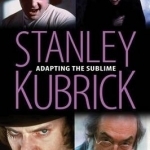
Stanley Kubrick: Adapting the Sublime
Book
Although Stanley Kubrick adapted novels and short stories, his films deviate in notable ways from...
Suswatibasu (1703 KP) rated Rendezvous with Rama - Rama Book 1 in Books
Sep 14, 2017
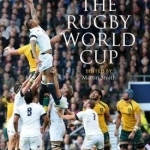
Telegraph Book of the Rugby World Cup
Book
An anthology of the Telegraph's best articles written on the World Cup from some of the biggest...
Social Learning Technologies: The Introduction of Multimedia in Education
Marc van Lieshout, Tineke M. Egyedi and Wiebe E. Bijker
Book
This title was first published in 2001. Offering a fascinating new perspective on the processes of...
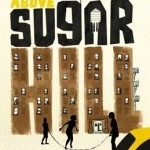
Above Sugar Hill
Book
Above Sugar Hill is an unforgettable collection of short stories set in Washington Heights, New York...
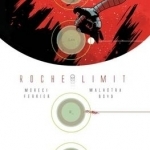
Roche Limit: Volume 1
Vic Malhotra and Michael Moreci
Book
*"Our destiny is the stars, and I will lead us there." Twenty years after this promise, billionaire...

In Dust and Ashes
Anne Holt and Anne Bruce
Book
In 2001, three year old Dina is killed in a tragic car accident. Not long thereafter Dina's mother...
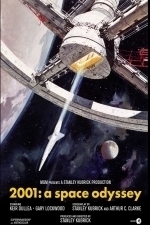
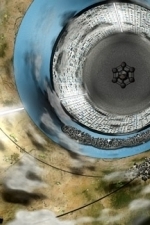

Andy K (10823 KP) Mar 4, 2018
BankofMarquis (1832 KP) Mar 4, 2018